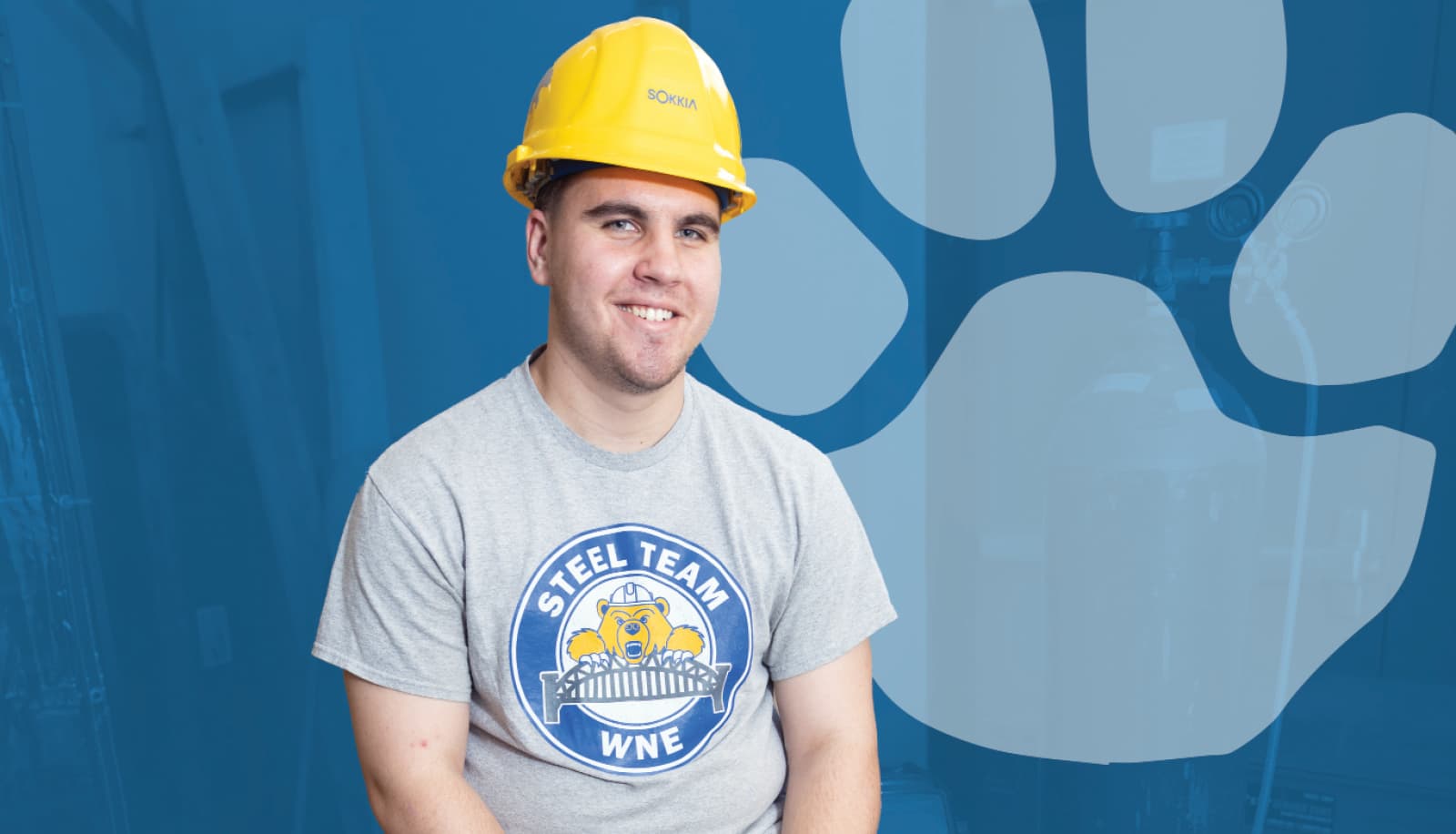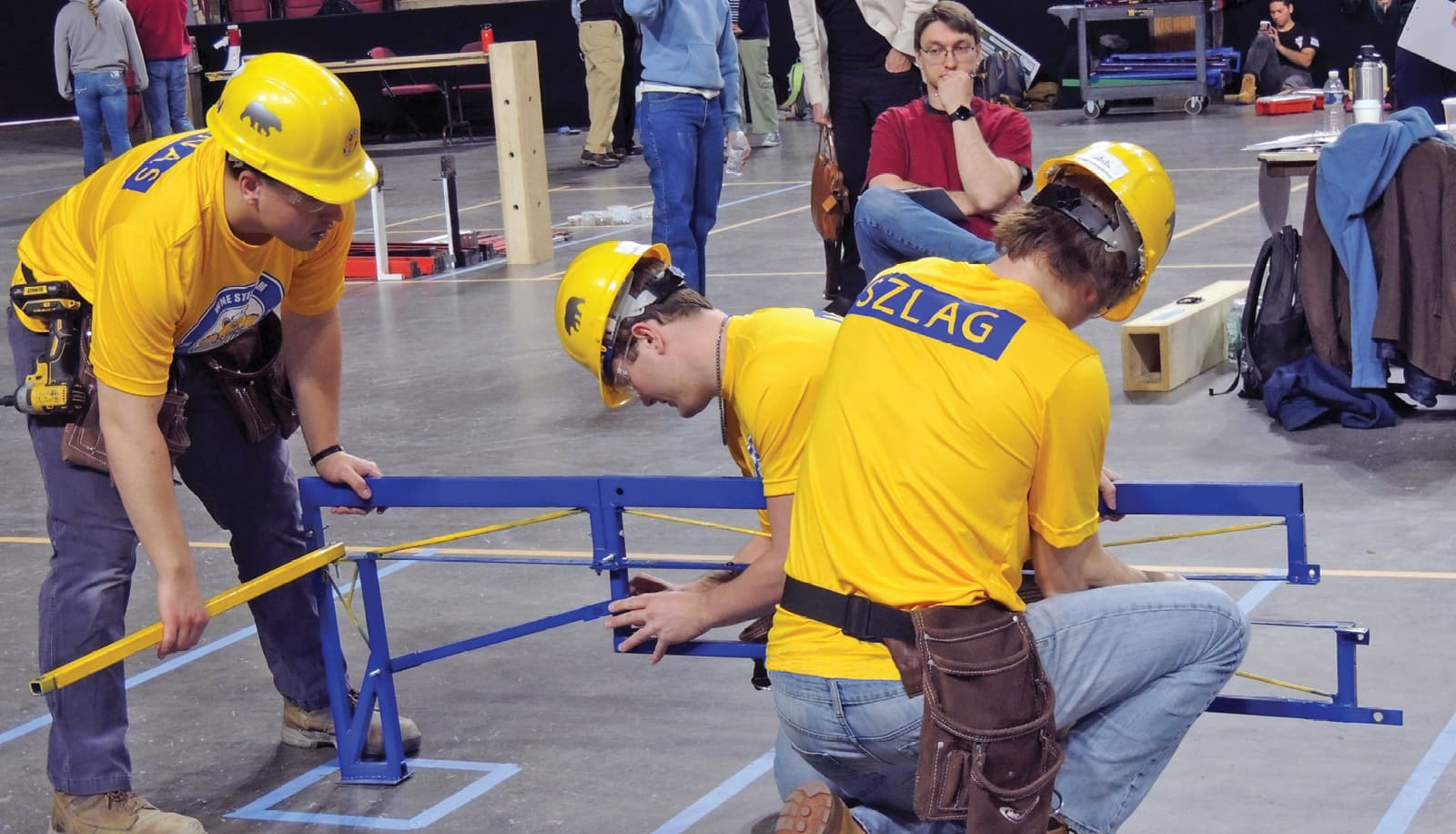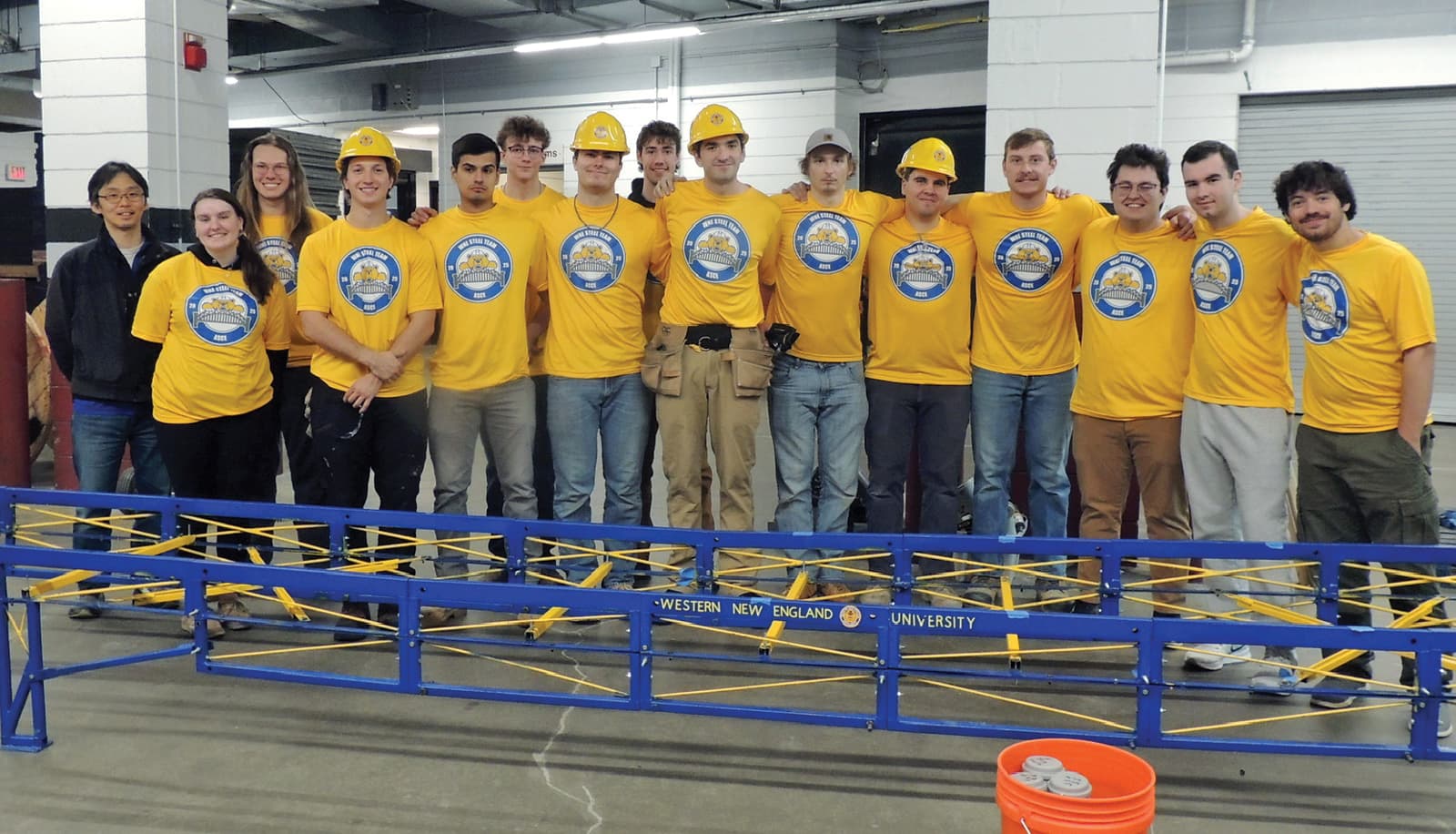
Cub Close-Up: Simon Banas
By Briana Strobel ’17/G’23
A senior civil engineering student and captain of the Steel Bridge Team, Simon Banas grew up in Somers, Conn., with a love for building things and playing hockey. He used both those interests to excel as a student at WNE.
Tell us why you chose Western New England University (WNE)...
I’ve always been interested in building things—structures, bridges, you name it. As a kid, I was always curious about how things were built and how they held up. As I got older, I developed a strong interest in how things were designed, particularly big structures like bridges and buildings. I’ve always been the type to look at something and wonder, how was this put together? It always sparked my curiosity. So, when it was time to start looking at schools, I was searching for somewhere that I could pursue a degree in civil engineering, and WNE felt like the right fit. It was close to home, and the engineering program was solid, so I felt that coming here would provide the foundation I needed to dive into the career I was looking for.
What is the Steel Bridge Team, and what does competition look like?
The Steel Bridge Team is a group of students with the collective goal of designing and building a bridge that can face the rigors and rules of the American Society of Civil Engineers’ (ASCE) annual competition. It’s not just about making the bridge look good—it’s about ensuring it’s structurally sound and capable of withstanding the weighted load tests. This process kicks off every fall when we create the initial design of the bridge on the computer. Throughout the first semester we work diligently to fundraise and collect parts because we begin the building process as soon as we get back from winter break.
We create detailed plans and drawings for each part of the bridge, which we send to the machine shop here on campus. We work closely with them as they help prepare the pieces for us to weld. As a team, this process requires a lot of coordination because we spend the bulk of our time carefully assembling the parts, making sure everything fits precisely, just like a big puzzle.
For the competition this year, we went to UMass Amherst in April for the regional round. Per regulations, all components are required to fit into a modular box, where the bigger parts of the bridge are pre-assembled and welded together. The goal is to finish assembling the bridge at the event within the 30-minute time frame. As a team, we must remain focused on what we’re doing because even small mistakes—like dropping a bolt—can cost our team points. It’s the perfect blend of engineering, competition, and teamwork.

How did you get involved with the team?
I had grown up playing hockey at a competitive level my whole life, and when I first got to WNE, that’s what I was focused on doing. When that didn’t work out, I felt lost. I quickly realized that life at WNE wasn’t just about one thing—it was about exploring new opportunities and stepping outside my comfort zone.
It was the start of my sophomore year, and I wasn’t sure where I fit in, so I made it my goal to join a club. At the time, a classmate of mine who was the president of the Steel Bridge Team invited me to a meeting, and although I was hesitant at first, I quickly realized I could learn something there. The more time I spent with the team, the more I connected with the people and the work.
A lot of members of the team come from sport backgrounds. For me, it fused the two things I love the most together. Joining the Steel Bridge Team made engineering a competition. It’s a fast-paced environment where you’re working with a team while racing against the clock—it felt like hockey in that way.
As captain of the team, how would you describe this experience?
Rewarding. Engineering was no longer about sitting at a desk drawing designs; it was about getting your hands dirty and learning through experience. It wasn’t about the grades anymore; it became about understanding the material and applying it to real-world problems.
Through this experience, I’ve learned how to manage not only the technical side of a project but also the interpersonal aspect of leadership—how to motivate people, be patient, and build a team that works together under pressure. It’s not only about the competition—it’s bigger—it’s about building something together, learning how to be leaders, and working as a team. The process has taught us so much about problem-solving, responsibility, and communication. Those lessons go beyond engineering; they apply to everything we will do in the future.
Being captain was a balancing act that taught me crucial leadership and teamwork skills that will serve me in the professional world. In this role, I was responsible for guiding the team through challenges, making decisions under pressure, and ensuring everyone’s safety. I taught my teammates how to use saws, grinders, and even welding equipment, all of which can be dangerous if not overseen properly, so I made sure everyone knew exactly how to use them.
I’ve also learned that being a leader can be overwhelming at times, especially when things get stressful, but I genuinely enjoyed it because it pushed me to improve. In the end, even when it got to be a lot, I was always able to reflect on how the team came together. We all shared the experiences of late nights building, drilling, welding, and testing, and because of that, the team became a close-knit group. Those memories of working together—especially the tough ones—no doubt will be what sticks with us the most.

Outside the Steel Bridge Team, how has WNE helped you to prepare for life after college?
When I think about where I started as a first-year student and where I am now, it’s a huge transformation. While I’ve certainly grown a lot during my time here, I still have a lot of learning to do, especially with how quickly things evolve within the engineering field—I think WNE helped me realize this. The small, close-knit environment made it easy to find mentors and connect with people who wanted to help me succeed.
Having graduated in May, I feel as though I have a solid foundation in engineering principles but have also developed my leadership skills, communication abilities, and problem-solving mindset. I feel ready to step into the workforce, and I’m confident that I can take on leadership roles while relying on my technical expertise to help make an impact. WNE’s hands-on learning approach, coupled with the dedicated support from professors and peers, has set me up for success in whatever comes next. I’m excited to continue learning and growing as I go.
What are your plans after graduation?
My junior year, I interned at Allied Testing Laboratories in Springfield, Mass., where I learned a lot of firsthand elements of civil engineering like soil testing, concrete testing, and structure inspections. I’ve also learned about different areas of civil engineering during this time, which I think makes me valuable.
I’m excited to continue working there post-graduation in a full-time capacity, with the hopes of expanding into new avenues, like steel inspections, taking what I learned at WNE and the Steel Bridge Team into my profession.


